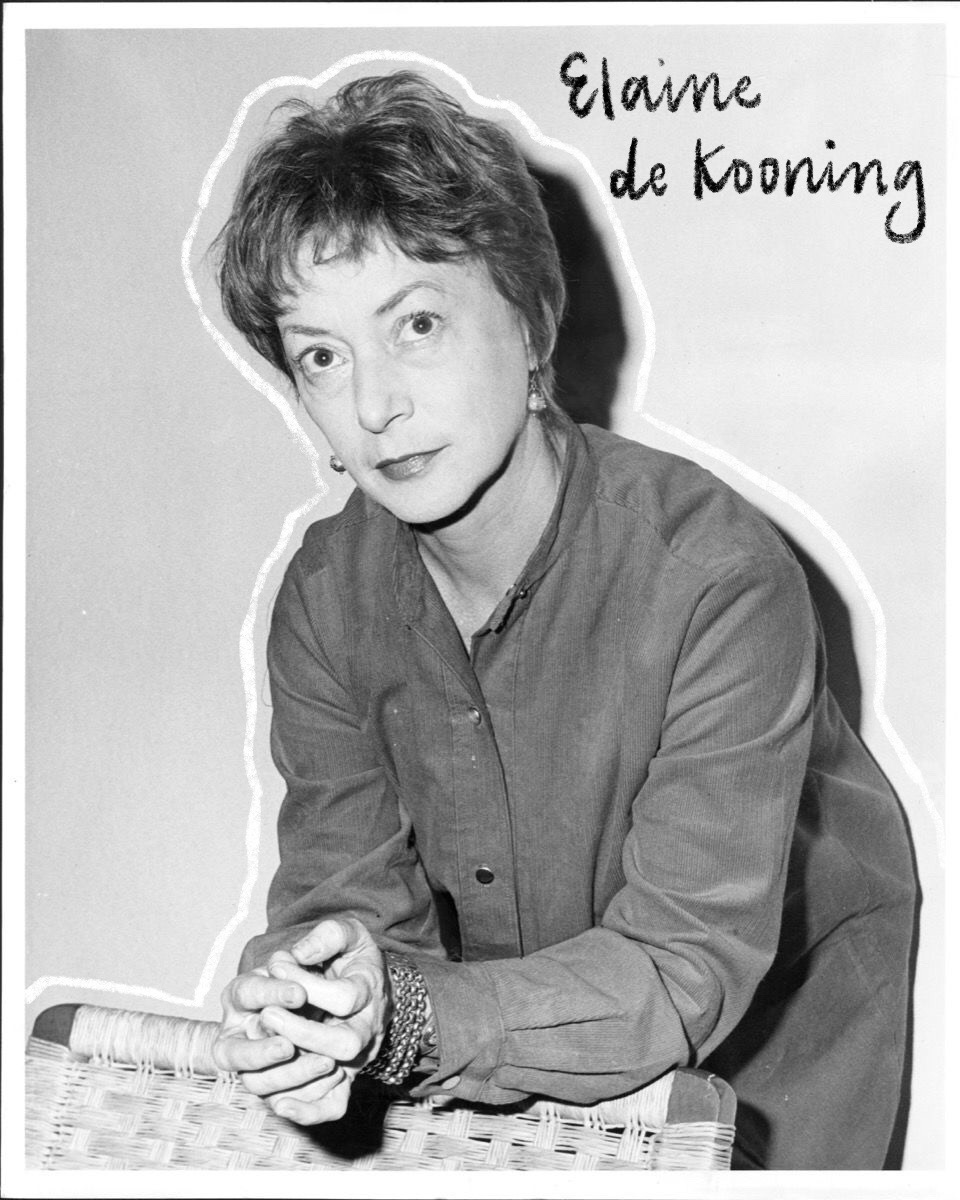Elaine was one of the most power figures in America’s first great artistic revolution, Abstract Expressionism. Vibrant, intelligent, talented. Not only a painter and figurist, she could also write. “The right word was as vital to her as breathing,” her sister said. As a bridge between those two worlds, she used the force of her personality and the power of her pen to bring the movement out of the studio and into the mainstream.
To be an artist, she said, you had to be reckless. I’d like to think of her as audacious. I love this from Ninth Street Women: Elaine liked to think of herself as a modern-day version of the hetaerae of Ancient Greece, a comrade to and companion of intellectual men, a woman who was equal to them and treated as such.
She may have considered herself equal to the men, but it was their art, not her own, that garnered the spotlight. She became “wife of” Bill de Kooning, even if she never stopped painting.
Her art matched her personality: vibrant, bold, playful but serious. Not surprisingly, she painted a lot of men and there is an intimacy to those portraits that I just love.
After her separation from Bill, Elaine lived in near poverty. She taught at dozens of colleges, was politically active and continued to writawst e and paint, including a commissioned portrait of JFK. I saw it last year at the National Gallery [swipe for the photo]. She’d been in the last stages of the painting when JFK was assassinated. Devastated, she didn’t touch her brush again for a year. The last decade of her life found her reunited with Bill after a 20 year hiatus. The ended as they began: she as advocate and protector, painting in his light [never his shadow]. She died 31 years ago today, just 70 years old, with a studio full of recent canvases.
